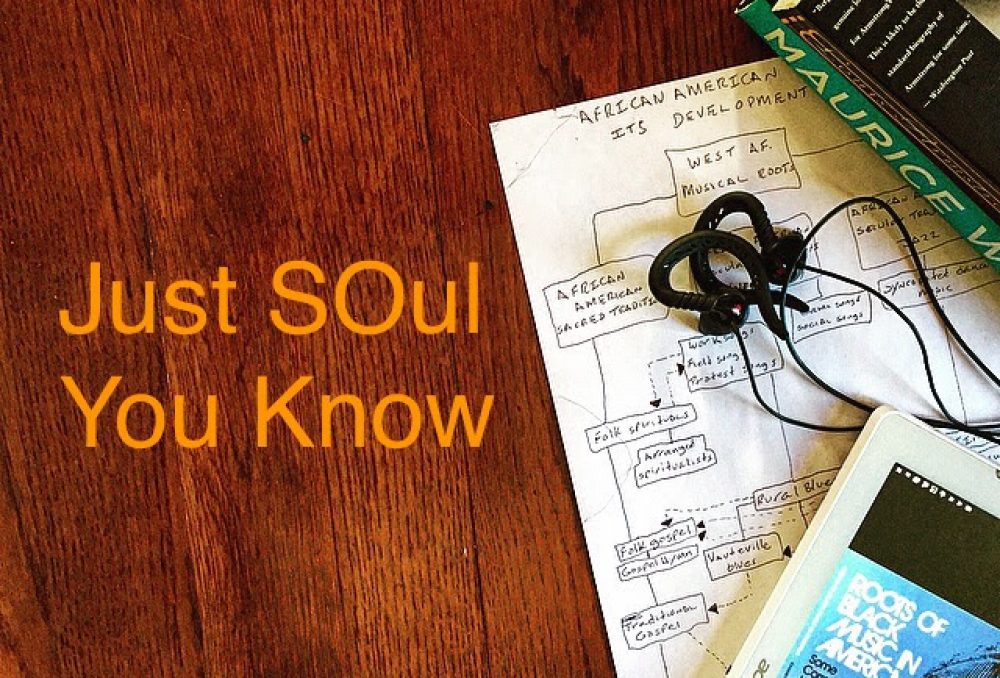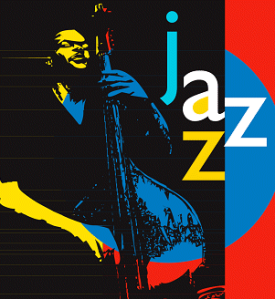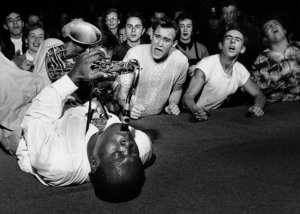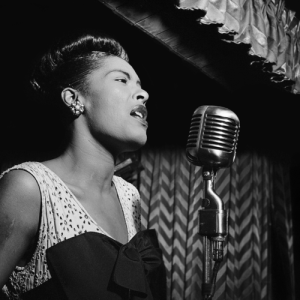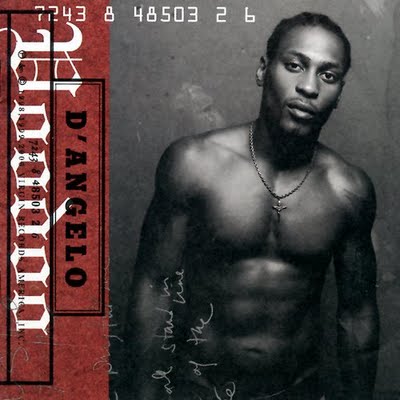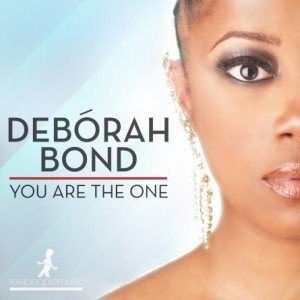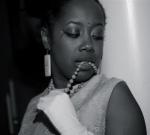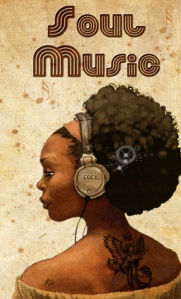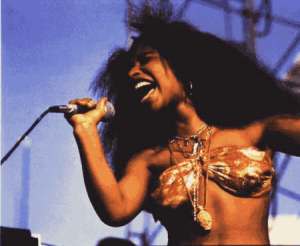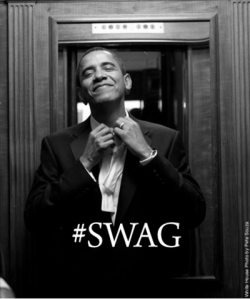In 1986, the British Soul, Electronic Groove, and R&B dance band Loose Ends released their 3rd studio album titled Zagora. This album was every bit of brilliant in terms of its musical orchestration, lyrical content, and its overall theme. In the arena of smooth, sexy, and sophisticated R&B Zagora easily held its own among the best R&B albums in the mid 80s. Still reeling from their hugely successful debut album A Little Spice, which contained the hits “Dial 999” and of course the stylish “Hangin’ On A String” as well as their sophomore album effort So Where Are You? (U.K. release) in ’85, Loose Ends entered the mid-eighties with a musical masterpiece . . . Zagora! It is for this very reason, I feel, Zagora needs to be re-reviewed and at least lightly analyzed. I may be coming from the place of a “fan-boy” here but I think this album is all that and a bag of chips. Loose Ends was/is one of my favorite bands.
In the arena of smooth, sexy, and sophisticated R&B Zagora easily held its own among the best R&B albums in the mid 80s. Still reeling from their hugely successful debut album A Little Spice, which contained the hits “Dial 999” and of course the stylish “Hangin’ On A String” as well as their sophomore album effort So Where Are You? (U.K. release) in ’85, Loose Ends entered the mid-eighties with a musical masterpiece . . . Zagora! It is for this very reason, I feel, Zagora needs to be re-reviewed and at least lightly analyzed. I may be coming from the place of a “fan-boy” here but I think this album is all that and a bag of chips. Loose Ends was/is one of my favorite bands.

60s Black London
Loose Ends (L.E.) formed in London in the early 80s. The group was a trio that consisted of the wonderful Carl McIntosh, the vocal siren and beauty Jane Eugene, and the musically gifted Steve Nichol. Collectively, these three were able to convey the intricate and nuanced and even historical elements of American Black Soul to a listening audience. This is a remarkable feat considering they were not part of the African-American freedom struggle; in the sense that African Americans have created a musical legacy, which helped propel them through an epoch of strife and ultimately on to freedom. African-American artists habitually draw from this unique musical legacy to imbue their music with a certain historical familiarity, expression, and purpose. Ergo the spirit of pain, jubilation, and freedom can be heard in all forms of African-American music. Somehow, L.E. was able to tap into that crucial legacy and create a soulful sound and groove–one that resonates especially well with African-American audiences. Is it possible that L.E. was able to draw similar musical elements from the historical perils of Black London’s route to equality that ranged from racial discrimination, the Windrush emigration, to the Commonwealth Immigration Act(s), and on to the Honorable Learie Constantine’s struggle for Black liberation? It is also possible L.E. tapped into the intricate and nuanced musical elements of Soul through a collective Black diasporic experience? I think yes! But I digress. . .
L.E. emerged as the leading R&B and Soul band of the 80s out of Europe. A few of L.E’s British R&B and Soul contemporaries at the time were Linx, David Grant, Hot Chocolate, Billy Ocean, Junior, Sade, Mica Paris, and Fine Young Cannibals.

Sade Power Plant 1985
These artists were part of the second wave of the “British music invasion” of the 80s and represented fresh R&B and Soul music from across the pond. L.E. stood at the forefront of this soulful British entourage.
During the 80s L.E. worked almost exclusively with music producer Nick Martinelli, who had roots with Motown and earned his stripes in Philadelphia. He worked with and produced albums and songs for the S.O.S. Band, Mtume, Phyllis Hyman, Eugene Wilde, Stephanie Mills, and Gladys Knight. Martinelli brought a Motown savvy-ness and an established Philadelphia vibe to his production, which made for a sexy and smooth R&B sound. Martinelli imparted his distinctive knowledge and musical approach to L.E. and the Zagora album.
In 1986 and 1987 the Zagora album peaked on the R&B Billboard chart at #7 and #59 respectively and contained several hit songs that found their place on the singles chart as well. Martinelli along with McIntosh, Eugene, and Nichol created an album with songs saturated in sexy, soulful, and intimate grooves while at the same time flushed with a myriad of global rhythms and sounds. The album’s concept finds the members of L.E. stranded in a desert in need of help. According to the website Black Evolution, L.E.’s press release constructs a visual and sonic landscape for the album, which drives the theme. It states
The car breaks down, they are out of water, lost and in the distance they can hear the faint crack of gun shots. The gun shots come from a tribe of nomads, who give them water and send them in the direction of a nearby village, called ‘Zagora’ . . . a real paradise in the middle of nowhere.
The album cover visually supports their “situation” as it depicts the trio with eyes fixed on the distant horizon where presumably relief and paradise can be found.

Loose Ends just outside of Zagora
Zagora is, in fact, a real city in the desert of Morocco. It is from this locale that L.E. begins what is in essence a travel narrative in sound where the location provides the musical backdrop to illuminate the complexities of a vacillating relationship between two people. Various levels of desire and intensity that make up a relationship are explored in song to reveal the emotional ebb and flow of love. The precariousness and dramatics of relationships while in an assumed paradise is the overall theme of Zagora.
The few songs reviewed and “analyzed” here are on the U.S. version of the album.
To begin, the mid-tempo, dance groove single “Stay A While Child” peaked at #18 on the Billboard R&B chart in 1986. It explored the desire of escalating a relationship from a mere friendship to a committed union and the loss of it all brought about by that vary escalation. The music of this recording suggests this narrative took place in Zagora itself as it contains echoes of traditional Moroccan music embedded in an R&B groove. For example the song’s intro immediately confronts the audience with traditional Moroccan sounding percussion made up of drums, cymbals, and chimes coupled with a blaring zurna: a Mediterranean wind instrument that resembles the physical aesthetics and sound of a clarinet in its upper octave. The zurna, with its unique sound and utilization of a foreign scale leads the listener into L.E.’s familiar and infectious groove. As the recording progresses it develops a strong R&B feel (2 and 4) while also retaining traditional Moroccan musical elements. The vocals of the song are fashioned in a call and response style as Eugene and McIntosh take turns crooning the merits and pitfalls of escalating a friendship to a loving union. Their vocal performance on this cut was convincing as Eugene pleaded for her sought after lover to stay and give love a chance. Meanwhile, McIntosh mused on how the escalation may cause an end to their friendship. This type of call and response through verse creates a palpable tension that is never resolved, which is evident in the fading chorus toward the end of the song. Eugene repeatedly interlaces between the chorus lines of “don’t leave me” with the lyric “stay a while child,” while McIntosh adlibs “you know I got to go” signifying the escalation may not have been the right thing to do to in terms of their friendship.
Their vocal performance on this cut was convincing as Eugene pleaded for her sought after lover to stay and give love a chance. Meanwhile, McIntosh mused on how the escalation may cause an end to their friendship. This type of call and response through verse creates a palpable tension that is never resolved, which is evident in the fading chorus toward the end of the song. Eugene repeatedly interlaces between the chorus lines of “don’t leave me” with the lyric “stay a while child,” while McIntosh adlibs “you know I got to go” signifying the escalation may not have been the right thing to do to in terms of their friendship.
The next track on the album is “Slow Down.” This song peaked at #1 on the Billboard R&B singles chart in 1986. The song’s electronic instrumentation was, as far as I know, well orchestrated by McIntosh and Nichol. I feel this up-tempo jam depicts the trio in motion. Its driving tempo and title suggests movement and thus I surmise they are moving out of Zagora and on to other places. Also, absent are the traditional Moroccan instruments and their unique rhythm and sound, which further indicates movement out of Zagora. The rustic instruments are replaced by the sounds of a synthesizer, which was immensely popular in R&B music during the 80s. The theme of this song articulates a yearning to speed up or advance the development of a relationship in the midst of one partner’s struggle and unwillingness to “settle down.” Again, through call and response, Eugene portrayed the character whom harbors a desire for love and commitment, while McIntosh takes on the character whom is not quite ready to engage in a committed relationship . . . yet! Through indignant demands and hurt feelings, Eugene implores McIntosh to commit. He responds in the chorus to her commands with “slow down, cause I can’t take the heat.” Frustrated, one verse suggests that Eugene will have to replace him in the relationship if he des not get with the so-called program of loving her. McIntosh defiantly responds in the verse “then I guess that’s how it’s got to be, you for you and me for me.” I imagine McIntosh saying this while doing the Kanye shrug– he could care less at this moment about any relationship.

The infamous Kanye Shrug. "I don't give a . . . .!"
However, there is a turning point in the song and McIntosh has a change of heart. Eugene poses the question “Now tell me what you’re going through?” And rather than a cantoric response from McIntosh, a soloing saxophone abruptly emerges as his vocal avatar, answering Eugene’s question in a rhythmic guttural grow full of angst, turmoil, and self-riotousness about his fear of a committed relationship. From this point on in the recording McIntosh gives in and relinquishes his fight against a pursuing relationship. He did more than just slow down, he stopped.
L.E. recorded keyboardist Dexter Wansel’s 1979 hit “Sweetest Pain.” I’m almost certain Martinelli, who was its original producer, introduced the song to the group. The original song featured Terri Wells on lead vocals and the Jones Girls on background. Being careful not to lose the overall feel of this sincere Soul burner, L.E. made very little changes to the song; they even chose to leave in its very disco (and dated sounding for 1986) chorus. This song continues the theme of relationships by describing the emotional and physical intensities of love. Crooned by Eugene, whose voice easily rivals Wells, takes the listener into the center of a powerful and fully functioning relationship. She explores the mental and physical toll of love as it takes her through the paces of its painful march, which according to Wansel and now Eugene and the gang is the sweetest pain. In terms of the travel narrative, Eugene begins to speak in French and their location becomes ambiguous. Have they traveled to France to continue their love affair in Paris or are they near the “village” of Zagora? It may be possible they have moved to other parts of Morocco where the country does speak proper French. I guess in paradise anything is possible.
The recording “Who are you?” is an unapologetic, musically well crafted, funny, and playful up-tempo song that should have entered the single charts. Conversely to “Sweetest Pain,” “Who are you?” examines the drama of an ill-conceived and dysfunctional relationship, which propelled the participants into a state of confusion regarding the familiarity of the other. The recording is smartly constructed in terms of its musical references and its nod to 60s era cinema, which was very evident to the perceptive listener. The song begins with the strumming of a guitar in the style of flamenco. Tight trumpets blasts out a tight mariachi like cadent and wooden sounding xylophones keep a decidedly Latin time accompany the guitar. The rhythm, sound, and tempo are quickly established. At this point McIntosh begins to narrate, in a weak Spanish accent or drawl, a playful story that defines the comical. He states:
They came from over the hills. They took my land; they took everything I have, my children, oh yeah, my wife–they killed my wife, but most of all they stole my last Clint Eastwood movie!
This bit of narration is brilliant in that it is able to convey to the listener simultaneously a stereotypical 60s “Western” cinematic Mexican character, a specific film genre, and the image of an iconic cinematic actor all couched in a playful spirit. What L.E. has done here is resurrect the imagery of the “spaghetti western” of the 60s then placed the drama of a dysfunctional relationship in its plot. In the intro, L.E. borrows and interprets Tuco’s motif in the 1966 film The Good Bad and The Uglycomposed by Ennio Morricone.

1966 GBU Soundtrack
Echoes of Tuco’s motif, which was comprised of yodeling voices can be heard in the songs musical intro in essence foretelling the listener of the wild, crazy, and certainly ugliness that a dysfunctional relationship can bring about. Amid the fully developed bouncy R&B groove with musical elements borrowed from Morricone, Eugene and McIntosh engage in playful banter throughout the verse and chorus of misdeeds and lies. McIntosh, towards the end of the song states he is Mexican in the same weak Spanish accent heard in the opening narrative, which further confused Eugene and the listener of his identity. It seems at this point in the album L. E. has moved out of Zagora, Morocco and are now in Spain or Mexico or possibly in a 60s spaghetti western.
“You Can’t Stop The Rain” is the quintessential grown and sexy R&B cut. In this song L.E. created a sexy in the moment and intimate vibe that conjures up the image of skin on skin movement, slow hands sliding over stomach and thighs, while bodies are tangled in Italian silk imported Egyptian sheets. It is sensual to say the least. Musically the song is exceptional from the beginning to end. The introduction materializes with the sound of heavy rain hitting the pavement. Most often the sound of rain symbolizes loss, sadness, despair, and loneliness, however, in this cut rain evokes feelings of in the moment intimacy between two lovers. This intimate moment was recreated a year later by Herb Alpert in his single “Making Love In The Rain,” which also contained heavy rain in its introduction and featured Lisa Keith and Janet Jackson on vocals, which added a definite sexiness to it (at least for me it did). As much sexiness as it is in the rain intro Eugene’s smooth crescendo “Ooohs” takes the song up a notch. Her voice enters as a flawless call to love. On this recording Eugene’s smooth silky underrated voice really shines here. There is no doubt she was among the top female singers of the mid 80s. In a true duet style, McIntosh’s voice keeps pace with Eugene’s. Although not on par with some of the male singers of this era, his voice was indeed distinctive and capable. And at some points his voice taps the tone of Marvin Gaye ever so briefly. But, what McIntosh lacked in vocal range he made up in his ability to continuously impart a deep felt passion and sincerity needed to make a L.E. song soar. Evidence of this is can be heard in his one and only verse of the song and his ever-present vocal interjections throughout the tune. Furthermore, Eugene and McIntosh intensify the sense of intimacy in “You Can’t Stop The Rain” as they employ what L.A. producer Louis White and I suggest what could be called a chant. The two harmonize the chant in unison and in doing so create a sort of language only two lovers in the moment of intimacy can understand. It’s brilliantly done and spot on! This song places the trio squarely in the middle of paradise. They have long since left Zagora and are neither here nor there. They are in that place of warm contentment, love, peace, and understanding. This place paradise is just the right spot for a respite from the realities of relationships amid dusty places.
And at some points his voice taps the tone of Marvin Gaye ever so briefly. But, what McIntosh lacked in vocal range he made up in his ability to continuously impart a deep felt passion and sincerity needed to make a L.E. song soar. Evidence of this is can be heard in his one and only verse of the song and his ever-present vocal interjections throughout the tune. Furthermore, Eugene and McIntosh intensify the sense of intimacy in “You Can’t Stop The Rain” as they employ what L.A. producer Louis White and I suggest what could be called a chant. The two harmonize the chant in unison and in doing so create a sort of language only two lovers in the moment of intimacy can understand. It’s brilliantly done and spot on! This song places the trio squarely in the middle of paradise. They have long since left Zagora and are neither here nor there. They are in that place of warm contentment, love, peace, and understanding. This place paradise is just the right spot for a respite from the realities of relationships amid dusty places.

L.E. R&B and Soul's Magic Touch
These are but a few songs off the Zagora album. This album in 1986 was musically and lyrically ahead of its time as it still resonates today. The trio managed to create a sonic landscape in a far away place that became just the right setting to explore the throws of relationships. Through R&B grooves that move, bounce, and grind with smooth grown ass sexiness L.E. certainly captured the Black Diaspora Soul that vibes with and communicates to its audience from similar historical places. Zagora’s travel narrative reminds us of the wide range of relationships and how they drive our lives in the here and now and in paradise.
 Album covers, since their inception, have always been a great sign-post of the climate of our times. Their images are visual cues that direct everyone from the culturally focused individual to the political astute citizen to the casual music listening fan toward the current grand social narrative of the day. Savvy musical artists in cahoots with photographers and visual artists (in this new era of entertainment it is most likely the director of artist branding) design their album covers to attract and stimulate interest in their content. Some of these efforts have been regrettable and forgettable, while others have been remarkably memorable and remain culturally relevant decade after decade.
Album covers, since their inception, have always been a great sign-post of the climate of our times. Their images are visual cues that direct everyone from the culturally focused individual to the political astute citizen to the casual music listening fan toward the current grand social narrative of the day. Savvy musical artists in cahoots with photographers and visual artists (in this new era of entertainment it is most likely the director of artist branding) design their album covers to attract and stimulate interest in their content. Some of these efforts have been regrettable and forgettable, while others have been remarkably memorable and remain culturally relevant decade after decade.